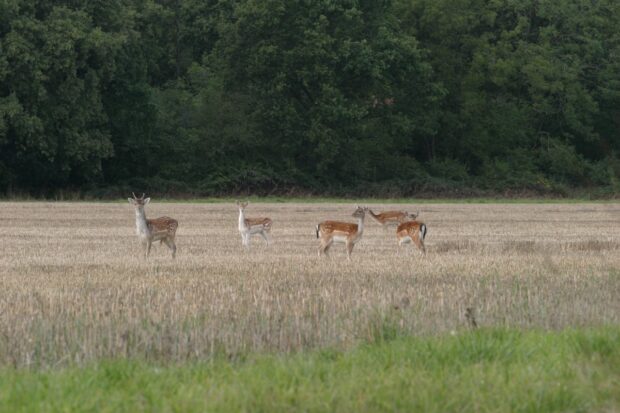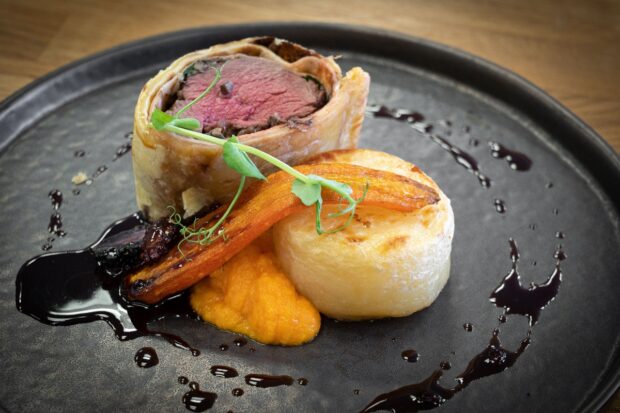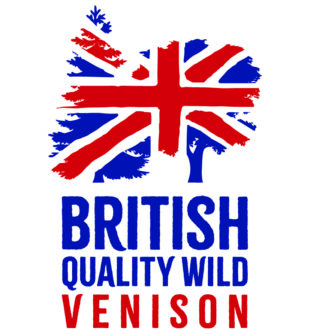 David Hooton is a Deer Officer for the Forestry Commission. This Great British Game Week (6 to 12 November), David looks at the importance of the British Quality Wild Venison Standard launched earlier this year.
David Hooton is a Deer Officer for the Forestry Commission. This Great British Game Week (6 to 12 November), David looks at the importance of the British Quality Wild Venison Standard launched earlier this year.
The UK’s deer population is believed to be at its highest level for 1,000 years. It has risen from an estimated 450,000 in the mid-1970s to some two million deer in our countryside and semi-urban areas today.

There are six species of deer living wild in the UK, just two are native, the red deer and roe deer. The introduced species (fallow, sika, Muntjac, and Chinese Water Deer) have found UK living very much to their liking, expanding rapidly across much of the UK during the last 100 years.
It should be remembered that just 100 years ago there were very few wild deer in the UK, with scattered remanent populations, and that today’s populations stem from a wide variety of introductions.
With rising deer populations there are increased risks to woodland creation, existing woodland, agricultural crops and wider biodiversity. With no natural predators, there is more browsing pressure on woodland ground flora through deer consumption of tree shoots, shrubs and woody vegetation that sequester carbon. Increased wild deer management is therefore essential.
Venison is produced as a product of this management work. Venison is a highly nutritious natural meat, high in essential amino acids and a rich source of thiamine, riboflavin, niacin, iron, and zinc. It is lower in cholesterol and saturated fats than other red meats and is a high-quality source of protein.

It is important that a large-scale, year-round demand for British Wild Venison is developed. The British Wild Venison Working Group, a partnership of organisations and individuals developed from across the venison supply chain, including the Forestry Commission, aims to support this through the introduction of a robust set of requirements for both the producer and the processor of wild venison via The British Quality Wild Venison Standard. This aims to:
- ensure traceability of wild venison and ensure a set of standards are met throughout the entire supply and processing chain
- provide a recognised, quality product with high standards of wild deer management, handling of culled deer and audited supply chains
- increase the market demand for traceable, accredited British wild venison
- support market development for an increasing quantity of accredited wild venison that supports the protection of woodland and landscape habitats from over browsing by deer populations
- increase consumer confidence that British Quality Wild Venison is responsibly sourced and fully traceable, with high standards of food safety, animal welfare and environmental protection
Historically venison markets have fluctuated in demand, and this has led to instability throughout the supply chain. Investment from Game Handling Establishments has occurred but is still very limited.
The current network of processors have not yet developed a market for the volumes of venison that are predicted to be available during the next few years. To ensure deer management continues at the levels that are required to reduce impacts, we need to increase demand and develop the venison market across the country.
Deer stalkers and processors are fundamental to delivering our aspirations of increasing woodland cover in the UK to 16.5% of area, supporting a wide range of biodiversity across our countryside, whilst also protecting arable crops.
Supporting the British Quality Wild Venison standard, by joining as an Approved Game Handling Establishment (AGHE) or as producers, we can all help to increase the market demand for high quality wild venison.
Some within the supply chain may question the value of having a standard, but we have standards across all areas of our lives, these are developed to support and protect us, providing reassurance that the products we are buying have been produced to the highest of standards.
The development of British Quality Wild Venison Standard supports this.

And we’re gaining momentum. In the first few months since launch in April 2023, we have received interest from both producers and processors. The first audit of a deer stalker producer occurred this week and the first audits of AGHE processors will take place in the New Year.
We expect that by Spring 2024, British Wild venison displaying the British Quality Wild Venison logo will start to become available, and we will be making strides in developing a year-round market.
If you would like to find out more about the British Quality Wild Venison Standard, visit British Quality Wild Venison - Quality assurance for British Wild Venison.



3 comments
Comment by David Jeffery posted on
There is no mention of market positioning and pricing in the process of developing the market for a larger volume of venison. Currently, in supermarkets that sell venison, it’s priced as a luxury product almost equivalent to dry-aged prime beef. It’s hard to see how this reflects the cost of actually getting the product to market, especially when the other high-quality meat, British lamb, is not much more than half the price.
Comment by Telkom jakarta posted on
Is there a time when it is permissible to hunt wild deer, or is it only done after obtaining a permit?
https://telkomuniversity.ac.id/direktori/
Comment by Vince Roberts posted on
There are established 'open seasons' for five of the six species of deer resident in the UK, during which they can legally be hunted (i.e. shot). No shooting of these deer is allowed during their respective 'Close Season'. As for a 'permit', there is no permit required as such in the UK but you do need to have the necessary authorisation for a 'deer legal' calibre on your Firearms Certificate. You also, of course, then need permission from the actual land-owner on whose land the deer are.